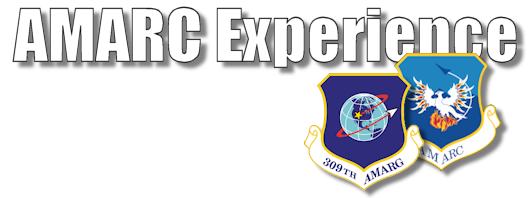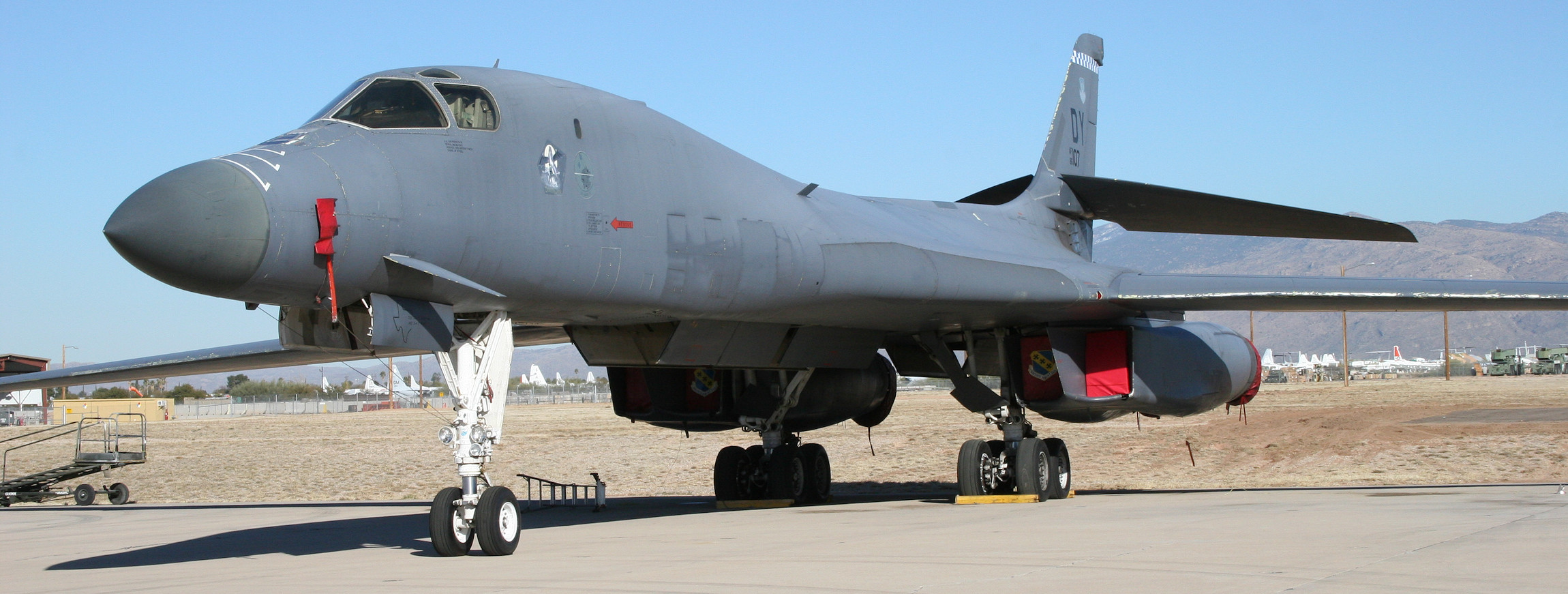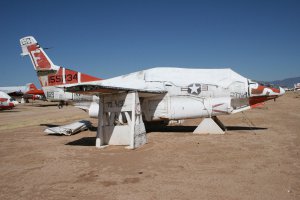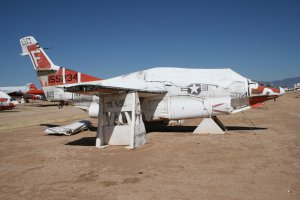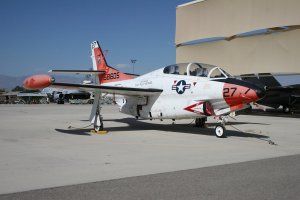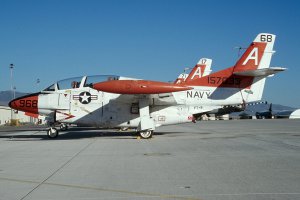In 1956 North American Aviation won a contract from the U.S. Navy to design and build a new jet trainer which would take a new generation of Navy pilot's from Basic through to Advanced Combat training. The training required from the aircraft would include high-altitude, high-speed formation and aerobatic flights; basic and radio instruments; night and day navigation; gunnery and bombing and carrier operations.
The aircraft proposed by North American, the T2J-1 Buckeye, was designed with safety, practicality and robustness in mind. Powered by a single Westinghouse J34-WE-48 turbojet developing 3400 pounds of thrust , the T2J-1 provided a tandom cockpit with LS-1 ejection seats for both pupil and instructor. The rear instructor seat was raised to provide good visibility to the front, while dual controls allowed the control of theaircraft from either seat. The low-level, rocket-propelled ejection system provided the ability for the pilot and student to vacate the aircraft throughout the flight envelope, including ground level. This was the very first time this capacity had been incorporated into a training aircraft design.
North American chose the proven mid-wing configuration of the FJ-1 Fury, one of the Navy's earliest jet fighters, which provided a straight, tapered wing design. A retractable arrestor hook and strong, wide, tricyle landing gear were provided to allow the aircraft to be slammed down onto decks during aircraft carrier landings and to cope with the heavy landings which inevitably occur during basic air training. Advanced features incorporated into the T2J design included large hydraulically actuated flaps and air brakes which significantly improved the ease of handling of the aircraft. The majority of the aircrafts serviceable systems and components were designed to be at waist level or below allowing ease of maintanence without the need for step ladders or stands.
The T2J design relied on many proven design features from previously successful aircraft. As a result North American skipped the prototyping phase and went straight into the pre-production with construction of six YT2J-1 evaluation aircraft at their factory at Columbus, OH. The first YT2J-1 flight took place on January 31st, 1958.
The Naval Air Test Center (NATC) at Patuxent River, MD. carried out initial Navy acceptance testing including operation from the USS Antietam (CV 36) Essex class aircraft carrier. After successful completion of these tests the Naval Air Basic Training Command (NABTC) received its first T2J-1 Buckeyes in July 1959. A new training syllabus was developed and on November 2, 1959, the first Navy flight students began their training with Basic Training Group NINE (BTG-9), later re-designated VT-4, at Naval Air Station Pensacola, FL. The first cadets to carrier qualify did so aboard the USS Antietem on June 2, 1960.
The last of the T2J-1s (T-2As) were delivered to the Navy in April 1961, bringing the total number built for the Navy (including re-production aircraft) to 217.
North American T-2B Buckeye
Following the end of production and the delivery of the final T2J-1 the Navy investigated the possibility of upgrading the design. North American produced two prototypes of a new version, designated the YT2J-2 (later YT-2B), by converting one of the original pre-production T2J-1 and one of the first production T2J-1 (BuNos 144218 and 145997). The YT2J-2 was powered by two Pratt & Whitney J60-P-6 turbojets developing 3,000lb each. Suprisingly the weight of the two J60s was less than the weight of the original J34, this resulted in a dramatic increase in power-to-weight ratio and improved the Buckeye performance to the point where it was more in-line with the jet fighters of the day. This would result in an easier transition for the air cadets when they moved over to active squadrons after qualification.
North American T-2B Buckeye 155213 in the AMARG RIT area. This aircraft served with VT-10/CTW-6 at NAS Pensacola, FL. before retirement. © Phil Kovaric.
North American T-2B Buckeye 158605 in the AMARG RIT area. This aircraft served with VT-10/CTW-6 at NAS Pensacola, FL. before retirement. © Phil Kovaric.
North American T-2B Buckeye 155232 in the AMARG RIT area. This aircraft served with VT-10/CTW-6 at NAS Pensacola, FL. before retirement. © Phil Kovaric.
The first flight of a YT2J-2 took place on August 30, 1962. Later in this year the US Navy re-designated their entire aircraft inventory and the YT2J-2 would now be known as the T-2B.
On April 6,1964 The Naval Air Basic Training Commandant, NAS Pensacola received the two YT-2Bs for use in evaluating the jet training syllabus. This evaluation was successful and the first produiction T-2B took to the air on May 21, 1965. The T-2B entered service with VT-4 during December of that year, in all a total of 97 T-2Bs would be delivered.
North American T-2C Buckeye
In 1968 a single T-2B, Buno 152382 was converted by the now renamed North American Rockwell Corp., at El Segundo, CA. to use two General Electric J85-GE-4 engines and was given the YT-2C prototype designation. This would be the first of a total of 231 T-2Cs to be built
At the start of the 1980's there was a shortage of active T-2 Buckeyes and a decision was taken to regenerate a sizeable number of T-2B's which had been retired from service over 5 years previously. After being pulled from storage at MASDC they went to the Naval Air Rework Facility (NARF) at Pensacola, FL. where they were prepared for return to service with the US Navy. These aircraft served for another nine years until in 1991 they were retired for a second time.
North American T-2C Buckeye 158605 from the Naval Test Pilot School (NTPS), NAS Patuxent River, MD. on the AMARC arrivals ramp. © Phil Kovaric.
North American T-2C Buckeye 158317 in the AMARC RIT area. This aircraft servced with VT-26/TW-3 and was based at NAS Chase Field, TX. © Phil Kovaric.
North American T-2C Buckeye 157033 from VT-9/CTW-1, NAS Meridian, MS. on the AMARC arrivals ramp. © Phil Kovaric.
North American T-2C Buckeye 158878 from VT-9/CTW-1, NAS Meridian, MS. on the AMARC arrivals ramp. © Phil Kovaric.
The T-2 Buckeye has proved to be a reliable and popular training aircraft, the only blemish on it's long service career happened in 1997 when the T-2 fleet was grounded a total of three times due to safety concerns. The type had a history of suffering the occassional uncommanded pitch event but as time went by the problem became ever more frequent. After an extensive period of testing the problem was found to be caused by the elevator boost actuator and fleet modification began in early 1999. At the same time a long standing deficiancy in the ejection seat pan was investigated and corrected.
Although the T-2 is an excellent training aircraft it is evident by it's completely analog cockpit that it has come from another era, it is also the last aircraft in the US Navy inventory which requires a special 'bridle' when being launched from a carrier catapult. The T-2 replacement, the T-45 Goshawk, has a state of the art, digital cockpit and performance which matches more closely the aircraft types which the cadets will fly after qualification.
Other T-2 Versions
A small number of T-2B and T-2C were converted to drone directors and were given the designations DT-2B and DT-2C respectively. These aircraft were operated by the Pacific Missile Test Center for controlling target drones during missile testing.
Final Days
On July 17th, 2003 the final T-2C carrier qualification took place aboard the USS Harry S. Truman (CVN 75), drawing to a close nearly 40 years of T-2 carrier training. The final T-2 carrier landing was carried out on July 25th 2003 by T-2C Buno 157058, modex '967'. Due to it's significance to US Naval history this aircraft was acquired by the National Museum of Naval Aviation, NAS Pensacola, FL. for preservation. Capt. Daniel Ouimette, Commodore TW-1 and Cmdr. Paul Shankland, Commanding Officer VT-9 officially presented the aircraft to the Naval Aviation Museum Foundation on April 9th, 2004.
Specifications
General Specifications
| Powerplant | 2 × General Electric J85-GE-4 turbojets, 2,950 lbf (13.12 kN) each |
| Length | 38 ft 3½ in (11.67 m) |
| Wingspan | 38 ft 1½ in (11.62 m) |
| Height | 14 ft 9½ in (4.51 m) |
| Wing area | 255 ft² (23.69 m²) |
| Empty weight | 8,115 lb (3,680 kg) |
| Max. takeoff weight | 13,179 lb (5,977 kg) |
| Crew | Two |
Performance
| Maximum speed | 522 mph (453 knots, 940 km/h) at 25,000 ft (7,600 m) |
| Range | 1,047 miles (990 nmi, 1,685 km) |
| Service ceiling | 40,400 ft (12,315 m) |
| Rate of climb | 6,200 ft/min (31.5 m/s) |

